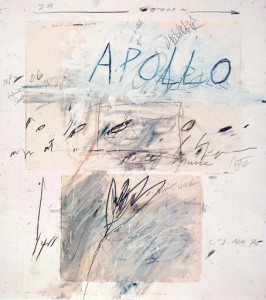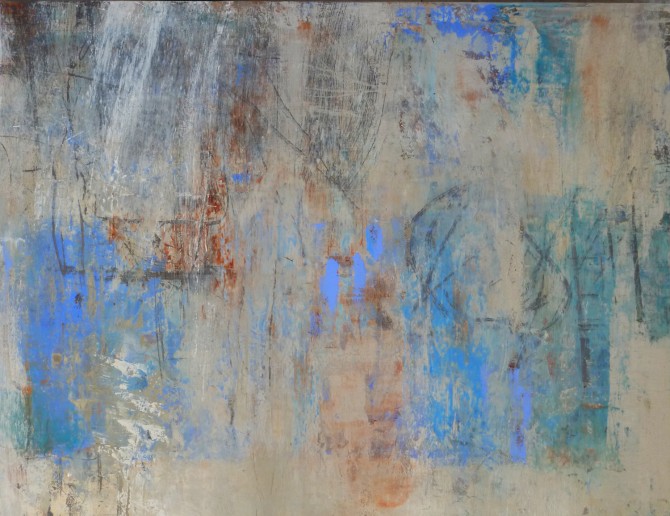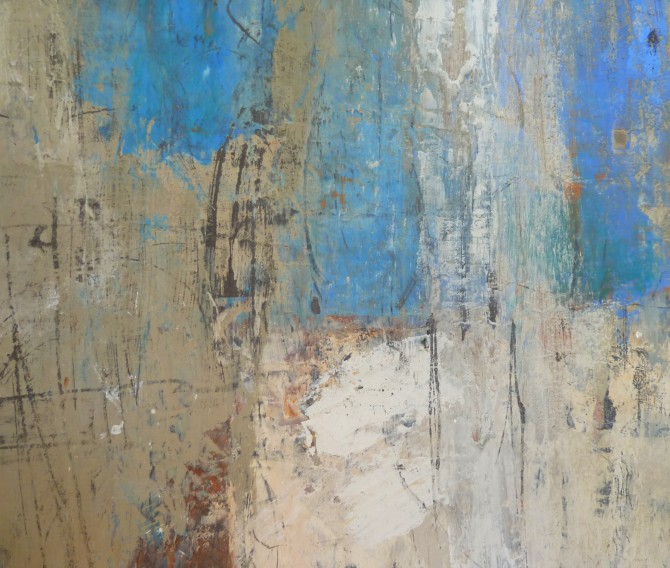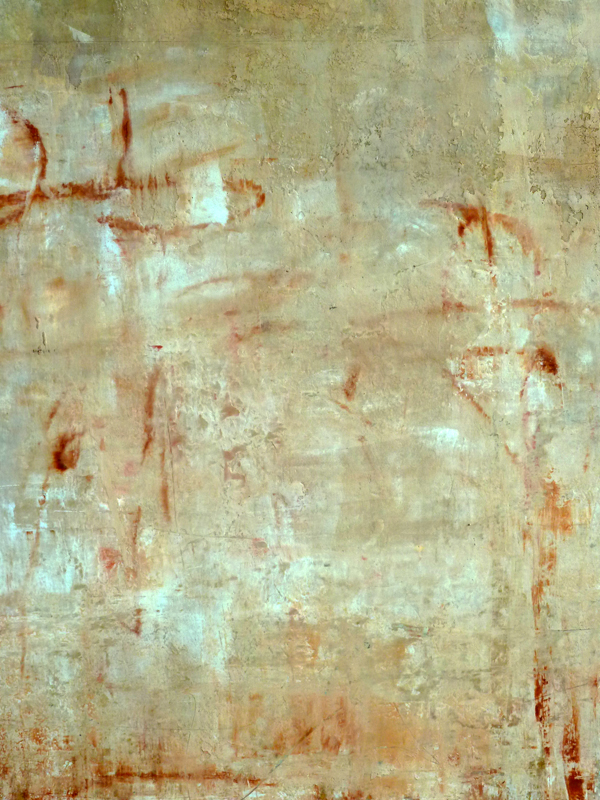The Palimpsest and Primal Line
Detail of a Work in Progress The Other Side 24″ x 36″ oil/mixed media on panel
The Palimpsest and Primal Line
Of all the contemporary visual and philosophical approaches to making work, the fertile potential of the layered palimpsest is the most exciting to me.
From Wikipedia:
A palimpsest (/ˈpælɪmpsɛst/) is a manuscript page from a scroll or book from which the text has been scraped off and which can be used again. The word “palimpsest” comes through Latin palimpsēstus from Ancient Greek παλίμψηστος (palímpsestos, “scratched or scraped again”) originally compounded from πάλιν (palin, “again”) and ψάω (psao, “I scrape”) literally meaning “scraped clean and used again”. Romans wrote on wax-coated tablets that could be smoothed and reused, and a passing use of the term “palimpsest” by Cicero seems to refer to this practice.
One my favorite recent forays in the studio involves the use of calligraphic lyrical line within paintings. My influences for this line work comes from a variety of places such as old manuscripts, cryptic handwriting, graffiti, the gesture in drawings, forms in nature, the patina of walls and surfaces, and other random palimpsests built up over time.
More than any other artist that comes to mind, my admiration for Cy Twombly’s primal line is a great source of inspiration too, of course.
I use any number of media for adding and subtracting lines including: paint, graphite, pigment and solvent, pastel, oil stick and tranfer methods, sandpaper, rubbing, scraffito, and scraping.
Two details of Work in Progress Homage 30″ x 30″ oil/mixed media on panel







